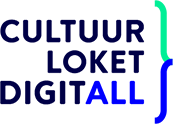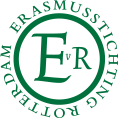Dichter
Robert Adamson

Robert Adamson
(Australië, 1943)
© Photograph by Juno Gemes
Biografie
Born in Sydney, Adamson grew up in Neutral Bay and on the Hawkesbury River, New South Wales. He has successfully combined the careers of writer, editor and publisher. From 1970 to 1985 he edited New Poetry magazine and in 1988, with Juno Gemes, he established Paper Bark Press. He has published fifteen collections of poetry and three collections of ‘autobiographical fiction’.
Any cartographer of Australian poetry would be foolish not to map Adamson’s Hawkesbury alongside Slessor’s Sydney and Murray’s Bunyah. Adamson’s voracious, often lethal, imagination has over forty years devoured many influences; his poetry as a whole partakes of an age-old conversation. Discussing his own poetic inheritance, Adamson remarks:
It flows out from Robert Duncan’s essay on Whitman, then meanders through the French Symbolism of Rimbaud and Mallarmé, rushes under Crane’s bridge, has a creek running through Brennan’s prose and McAuley’s final canticles and through Webb’s tributary; then it comes up into my swamp in riddles. There are other streams of it that even shoot out into the rapids of New York.
Adamson’s ironic treatment of his recurrent use of the river metaphor belies a degree of sardonic detachment from, if not unease with, the development of such charts of literary inheritance.
In the very short selection presented here, I have chosen poems that draw and redraw Adamson’s imaginative homeland, the Hawkesbury River, and its inhabitants. What is remarkable in reviewing these poems, drawn from over forty years of work, is the concentration of will and imagination, the fashioning and refashioning of the natural world into the world of symbols and the equally organic generation of a poetics through deep and long meditation. Adamson does not simply draw on the Hawkesbury as some water-colourist-cum-poet (though he does offer perhaps the most exacting imaginative excavation of a particular landscape in Australian poetry) but creates from it and inhabits it as an imaginative homeland, a place of myth. Through Adamson’s poetry, the Hawkesbury overlaps the river of Heraclitus, the shoals of the Hebrus where Orpheus’ remains sing their eerie song and, of course, the Styx. Adamson once commented:
I am lucky to have the actual Hawkesbury, I love it, it’s beautiful, it is the world flowing through my life, full of birds, fish, mangroves, mud and stars. I’m fortunate enough to be able to live here because my grandfather gave me the river. And yet it’s not the river I try to write, my poetry’s landscape is darker. I am writing about the internalised landscape. There’s another thing that Bonnefoy mentions, not heaven, not hell, almost an Eden, a place that you imagine, it’s just across the river. If you live there though, if you imagine it into being, it dissolves – but it may be where you are living. You can never get there and yet it is where you live.
Not heaven, not hell, but the abyss Baudelaire welcomes as opening upon the unknown and the new. Adamson states that the river is an internalised landscape, which is in part an inheritance from his grandfather (as ‘Creon’s Dream’ emphasises). This has been a conscious and laborious process, a working of hardship and devotion, that has tempered his work from its earlier new romanticism into a poetry that is wholly original. Adamson’s earlier renderings of the river (such as ‘The river’) seek an ecstatic relation to experience, while many of his more recent works display a growing sense of poetry’s possibility of opening experience simultaneously to the presence of the world and the knowledge of death that haunts that presence, to the intimacy of dying. Adamson’s most recent poems draw experience, captured in the landscape of the river, into a close relation with the unknown just on the other side of that river resonant with the Styx.
Robert Adamson is one of the truly great poets of place and deep meditation. Over almost four decades of dedication to his craft and to his imaginative homeland, the Hawkesbury River, Adamson has forged a body of work equal to the various poets and poetries he has engaged along his often troubled and illuminating way. From Bob Dylan to Wallace Stevens, from Arthur Rimbaud to Gerard Manley Hopkins, from Shelley to Zukovsky, Adamson winds a path through the abyssal forest of symbols to the natural world, driving Symbolism over the edge into the darkness of a nihilism still able to experience, praise, savour and celebrate the world in all its impossibility and presence.
© Michael Brennan
PoetryCanticles on the Skin. Illumination Press, Sydney, 1970
The Rumour. New Poetry for the Poetry Society of Australia, Sydney, 1971
Swamp Riddles. Island Press, Sydney, 1974
Theatre I-XIX (1976).
Cross the Border. Prism, Sydney, 1977
Selected Poems. Angus and Robertson, Sydney, 1977
Where I Come From. Big-smoke Books, Sydney, 1979
The Law at Heart’s Desire. Prism, Sydney, 1982
The Clean Dark. Paper Bark Press, Sydney, 1989
Selected Poems 1970-1989. Qld: University of Queensland Press, St. Lucia, 1989
The Brutality of Fact. Folio, Applecross W.A., 1993
Waving to Hart Crane. Angus and Robertson, Sydney, 1994
The Language of Oysters (with photos by Juno Gemes, 1997). Craftsman House, Roseville, NSW, 1997
Meaning. Peter Riley, Cambridge, 1998
Black Water: Approaching Zukofksy. Brandl and Schlesinger, Rose Bay, NSW, 1999
Mulberry Leaves: New and Selected Poems (1970-2001). Paper Bark Press, Sydney, 2001
Autobiographical fiction
Zimmer’s Essay: Some More Experiences. Wild and Woolley, Glebe, NSW, 1974
Wards of the State. Angus and Robertson, Sydney, 1990
Links
Jacket
Douglas Barbour reviews Robert Adamson.
Gedichten
Gedichten van Robert Adamson
Sponsors
























